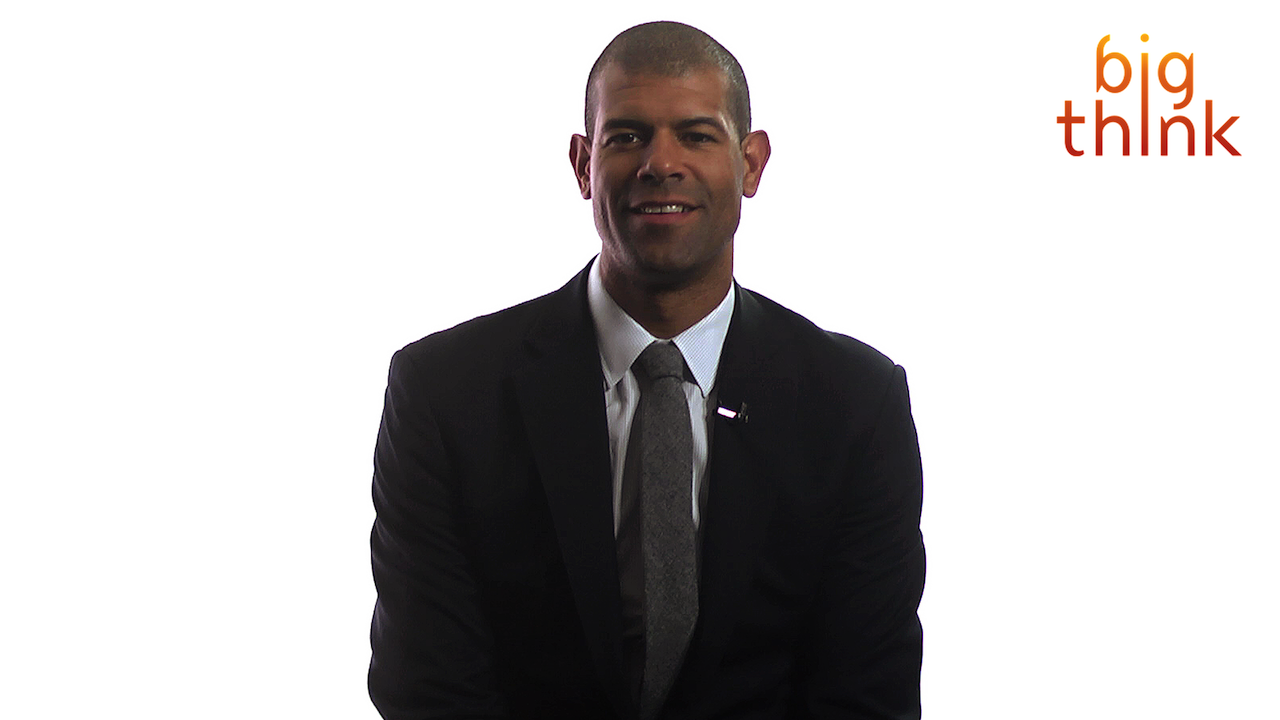Two-time NBA champion Shane Battier demonstrates examples of advanced basketball analytics and how they contribute to a team’s game plan. Data allows for a greater competitive advantage, says Battier. When every point comes at a premium, it’s vital to understand on a deeper level the intricacies and nuances of the game.
Shane Battier: Sports are about gaining the competitive advantage and for so long the traditional ways of gaining the advantage is through harder training. You know basketball, which I played, it was honing your jump shot. It was working harder in the weight room to become faster, jump a little higher. I was lucky to sort of grow up in sort of the golden age of analytics as it pertains to basketball in the age of really the emergence of big data and sports. The way I look at it is it’s just another way, like honing your jump shot or honing your jump hook or getting faster or stronger, to gain a competitive advantage on the basketball court, this time using numbers and data.
Before I really learned analytics, I tried to guard a guy, Kobe Bryant, who in my estimation was the toughest competitor that I ever played against. And all I had to rely on was the old eyeball test scouting report. Kobe’s got a really good right hand. You have to keep him out of the painted area. He’s a great finisher. So yeah, any Joe Schmo fan could tell you those things. But after studying and going through the school of analytics, I knew exactly to a tee who Kobe Bryant was. And I knew as a defender trying to stop him Kobe’s worst-case scenario and my best-case scenario was to make him shoot a pull up jumper going to his left hand, all right. The average possession of the Los Angeles Lakers in 2008 was generated 0.98 points per possession, 0.98. So you took the average possession of the Lakers. They were going to score 0.98 points every time they had a possession. And so Kobe Bryant only shot the left-handed pull-up jumper at a 44 percent clip. So every time that he went left and shot that pull-up jumper he was generating 0.88 points per possession.
Well that’s a tenth of a point less than the average Laker possession. And so if I could make him do that time and time again, which is a lot tougher to do than to say, I’m shaving off a tenth of a point every single time. I’m actually making him detrimental to his team. And the way you have to look at it is all these tenths of points, all right, add up. They add up here; they add up here; they add up there. And all of a sudden those tenths of a point become points. And in the NBA as we all know the margin between wins and loses is very, very thin. So those tenths of points matter. And that’s all it really is. It’s no different than playing the stock market. You’re trying to shave percentage points off your risk. And if you can accumulate enough, guess what? You’re going to do very well. And so guarding a guy like Kobe Bryant, understanding exactly who he is, what his weakness is, made me a much better defender and allowed me to stick around the NBA for 13 years.
Directed/Produced by Jonathan Fowler, Elizabeth Rodd, and Dillon Fitton






